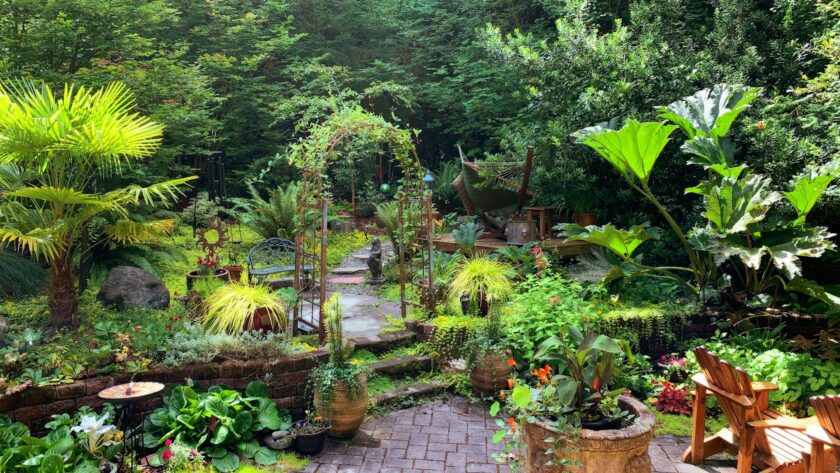Key Takeaways:
- Discover creative landscaping ideas to rejuvenate your backyard.
- Incorporate sustainable practices and native plants.
- Learn about the benefits of landscaping features like water elements and outdoor living spaces.
Table of Contents:
- Why Update Your Backyard Landscape?
- Sustainable Landscaping Practices
- Incorporating Native Plants
- Water Features: Adding Serenity to Your Space
- Creating Outdoor Living Spaces
- DIY vs. Professional Landscaping Services
Why Update Your Backyard Landscape?
Updating your backyard landscape can provide numerous benefits, from increasing property value to enhancing your enjoyment of the space. Whether you want to create a tranquil oasis or a vibrant, entertaining area, thoughtful landscape design can transform any backyard into a sanctuary. A well-designed garden not only boosts the aesthetic appeal of your home but also offers functional benefits, such as improved air quality, reduced noise pollution, and natural insulation.
Remarkably, well-planned landscapes can enhance your mental well-being by offering a calming space to rest and decompress. Spending time in nature is known to reduce stress and anxiety, making your backyard a personal refuge from the hustle and bustle of daily life. Beyond personal benefits, a beautiful backyard can also serve as a gathering spot for friends and family, enhancing your social life and creating lasting memories.
Sustainable Landscaping Practices
Sustainable landscaping is becoming increasingly popular as more homeowners recognize the environmental benefits of eco-friendly practices. Methods such as rainwater harvesting, xeriscaping, and using organic materials can significantly reduce the ecological footprint of your garden. By incorporating sustainable practices, you contribute positively to the environment and create a low-maintenance, cost-effective outdoor space.
- Rainwater Harvesting: Collecting rainwater for garden use conserves water and reduces utility bills. Installing rain barrels or other collection systems can efficiently divert rainwater to your garden beds, minimizing your reliance on municipal water supplies.
- Xeriscaping: Designing your garden to minimize water use by selecting drought-resistant plants. Xeriscaping saves water and reduces the need for fertilizers and pesticides, promoting a healthier garden ecosystem.
- Organic Materials: Using natural compost and fertilizers improves soil health and reduces chemical runoff. Organic gardening practices can enhance the fertility and structure of your soil, encouraging robust plant growth without the need for synthetic chemicals.
Embracing sustainable landscaping practices can make your garden a model of environmental stewardship and innovation.
Incorporating Native Plants
Native plants are a wise choice for any garden since they are acclimated to the local soil and temperature. They typically require less water and maintenance and provide essential habitats for local wildlife. Including native plants in your landscape design can promote biodiversity, support pollinators, and reduce the spread of invasive species.
Additionally, native plants can add unique beauty and diversity to your landscape. From vibrant wildflowers to hardy shrubs, there is a wealth of native species that can thrive in your garden. Researching which plants are native to your region can set your garden up for success and sustainability. By selecting naturally suited plants to your area, you may design a robust and flourishing garden that uses fewer resources.
Water Features: Adding Serenity to Your Space
Water features like fountains, ponds, or waterfalls can introduce a calming element to your garden. Unwanted sounds can be muffled, and flowing water can produce a calm atmosphere. Additionally, water features can act as focal points in your landscape design, attracting attention and boosting the outdoor area’s aesthetic appeal.
Some water features can even attract birds and other wildlife, enhancing the biodiversity of your backyard. Adding fish to a pond or creating a bird-friendly environment with a birdbath can bring nature to your doorstep. However, it’s important to consider maintenance needs and opt for energy-efficient pumps to minimize the environmental impact. Properly maintaining your water features can ensure they remain a beautiful and sustainable addition to your garden for years.
Creating Outdoor Living Spaces
Adding outdoor living areas to your house is a great way to increase its usable space area—these range from simple patios with seating areas to elaborate outdoor kitchens and dining spaces. Well-planned outdoor living areas can serve as multifunctional hubs for relaxation, entertainment, and family gatherings. Designing these spaces with comfort and functionality in mind can enhance your overall living experience.
Consider elements like weather-resistant furniture, shade structures, and lighting to make the space functional and inviting year-round. Comfortable seating, outdoor rugs, and fire pits can create a cozy atmosphere, while pergolas, umbrellas, and shade sails provide relief from the sun. By thoughtfully incorporating these elements, you can create an outdoor living space that is both practical and enjoyable.
DIY vs. Professional Landscaping Services
Deciding whether to take on your landscaping project yourself or hire an expert can take time and effort. Do-it-yourself landscaping can be a satisfying and affordable method to design an environment unique to your likes and preferences. For those with a green thumb and a passion for gardening, DIY projects offer the opportunity to learn new skills and take pride in their accomplishments.
However, complex projects may benefit from the expertise of professional landscapers who can provide advanced design and installation skills. Professional services can offer valuable insights, efficient project management, and high-quality results that may be challenging to achieve independently. Weigh your project’s scope, budget, and skill level to make the best decision for your backyard transformation. A mixed strategy may work well in some circumstances, where you handle more straightforward tasks and hire professionals for more complex elements.




